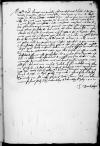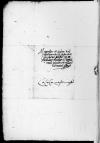Litteras,[1] quas mihi Tua Magnificentia dedit nuper in Wiener Neustadt (Nova Civitas Austriae), city in eastern Austria, ca. 50 km S of Vienna⌊Nova CivitateWiener Neustadt (Nova Civitas Austriae), city in eastern Austria, ca. 50 km S of Vienna⌋, reddidi Klamm (Clam), castle on the border of Lower Austria and Styria, N of Schottwien am Semmering⌊ClamKlamm (Clam), castle on the border of Lower Austria and Styria, N of Schottwien am Semmering⌋,[2] sed non clam, immo manifeste.[3] Ultro hoc, quod antea expertus sum de Tua Magnificentia, uberiorem repperi fidem, quae non fuisset necessaria inter necessarios. Necessarium me dico Magnificentiae Tuae plurimis argumentis, quae nunc recensere esset supervacaneum. Venit ad me Klamm Castle stewart ⌊praefectus Magnificentiae TuaeKlamm Castle stewart ⌋ mane, dum abire decrevissem, et mihi obtulit eam Tuae Magnificentiae benevolentiam, quam semper re ipsa sum expertus. Fecit mihi nomine Vestro eum honorem, quem debuit, et in omnibus me optime habuit. Et ob illam consuetudinem, quam cum Tua Magnificentia contraxi a multis annis, non potui mihi temperare, quin castrum ascenderem et pro mea curiositate ibidem omnia viderem, prout ipse praefectus Magnificentiae Vestrae aliquando coram latius referet. Ibidem me novis affecit honoribus, qui mihi eo gratiores erant, quo illos sciebam mihi esse a meo desideratissimo esse profectas. Et qualis fuit honor, ipsae litterae et calamus ostendunt. Quapropter pro sua dudum in me concepta benevolentia nunc eas, quas possum, accipiat gratias. Aliquando, dum res meae melius habebunt, sum redditurus. Plura scriberem, obstat mihi ingens pelagus, vinum, quod mihi hoc tempore carius est quam calamus. Summa summarum vestrissimus sum et rogo, in his punctis maneat, in quibus fuit antiquitus. Commendo me Magnificentiae Vestrae plurimum.


 ONB Cod. 13.597, f. 37v
ONB Cod. 13.597, f. 37v